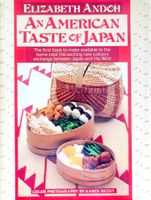Advertisement
Setting the Cross-Cultural Table
Appears in
Published 1985
Ideas on how to set your table, including a discussion of thematic motifs from nature, suggestions on choosing plates and bowls, diagrams for making intriguing napkin folds and decorative ribbon ties
In Japan you might begin a meal with luminous slices of tuna served on a gently sloped mound of shaved ice, then be offered a landscaped arrangement of carved vegetables taking its cue from the season and served on a smooth but patterned porcelain dish. At the same meal, glaze-grilled salmon might be brought to you on a roughhewn slab of reddish-brown clay, while ornate but edible tidbits float in a delicate broth served in an elegant lacquer bowl, the pattern of which is discernible through the clear soup. Japanese tabletop artistry depends upon the interplay of shape, color, and texture of food and plate. Typically, each food is presented on a different surface, one that suits the particular food being served at that time and on that occasion. Traditionally there are no cloths, placemats, or napkins on the table in Japan, and utensils are limited to chopsticks only.

